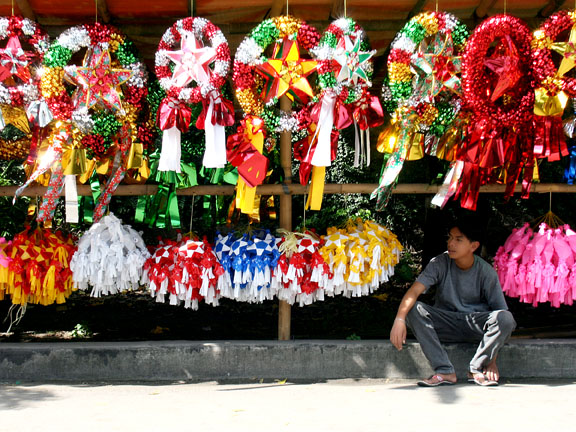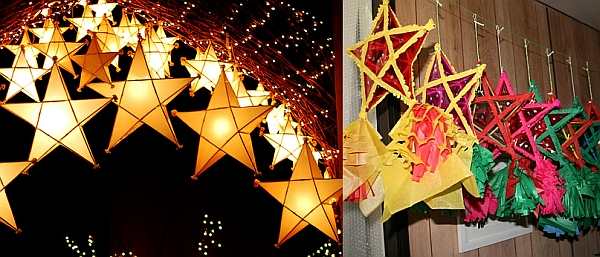''PHLIPPINE LANTERNS''



A lantern is a portable lighting device or mounted light fixture used to illuminate broad areas.
Lanterns may also be used for signaling, as torches, or as general light sources outdoors.
Low light level varieties are used for decoration. The term "lantern"
is also used more generically to mean a light source, or the enclosure for a light source.
Examples are glass pane enclosed street lights, or the housing for
the top lamp and lens section of a lighthouse.


Lanterns are first spoken of by Theopompus, a Greek poet, and Empedocles of Agrigentum.
Lanterns were used by the ancients in augury. The only known representation
of an ancient Egyptian lantern probably is not much different from
those spoken of by John the Evangelist in John 18:3 from the New Testament,
where the party of men who went out of Jerusalem to apprehend
Jesus in the garden of Gethsemane is described as being provided
��with lanterns and torches.��[2] Lanterns in ancient China were made
of silk, paper, or animal skin with frames made of bamboo or wood.
One of the earliest descriptions of paper lanterns is found in records
from Khotan, which describe a "mounting lantern" made of white paper.
The simplest technology used is the candle lantern. Candles give only a
faint light, and must be protected from wind to prevent flickering or
complete extinguishment. A typical candle lantern is a metal box
or cylinder with glass or mica side panels and an opening or
ventilated cover on the top. A primitive form of candle lantern,
made from white horn and wood and called a lanthorn, was first
made in the time of the English king Alfred the Great (849–899).


Decorative lanterns exist in a wide range of designs.
Some hang from buildings, while others are placed on or just above the ground. Paper lanterns occur in societies around the world. Modern varieties often place an electric light in a decorative glass case.

Chinese lanterns in the night sky of Lijiang, Yunnan The ancient Chinese sometimes captured fireflies
in transparent or semi-transparent containers and
used them as (short-term) lanterns.
Raise the Red Lantern, a Chinese film,
prominently features lanterns as a motif.
Lanterns are used in many Chinese festivals.
During the Ghost Festival, lotus shaped
lanterns are set afloat in rivers and seas
to symbolic guide the lost souls of
forgotten ancestors to the afterlife.
During the Lantern Festival, the
displaying of many lanterns is still a
common sight on the 15th day of the first
lunar month throughout China. In Chinese
festivities, the kongming lanterns can
be seen floating high into the sky during festivities.
Use of fireflies in transparent containers
was also a widespread practice in ancient
India. But since these were short term
solutions, the use of fire torches
was more prevalent.[citation needed]
In the Eastern Orthodox Church lanterns
are used in religious processions and
liturgical entrances, usually
coming before the processional cross.
Lanterns are also used to transport
the Holy Fire from the Church of the
Holy Sepulchre on Great Saturday during Holy Week.
